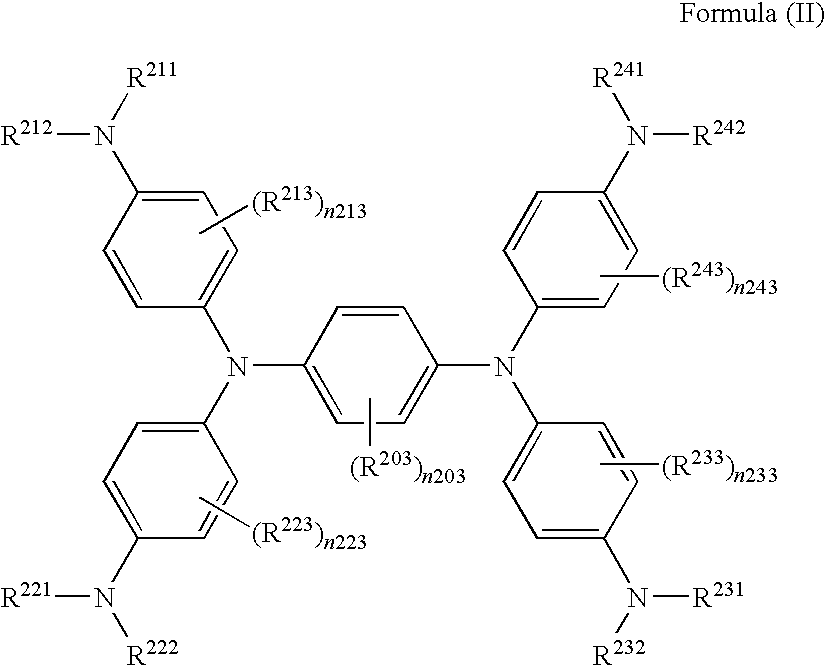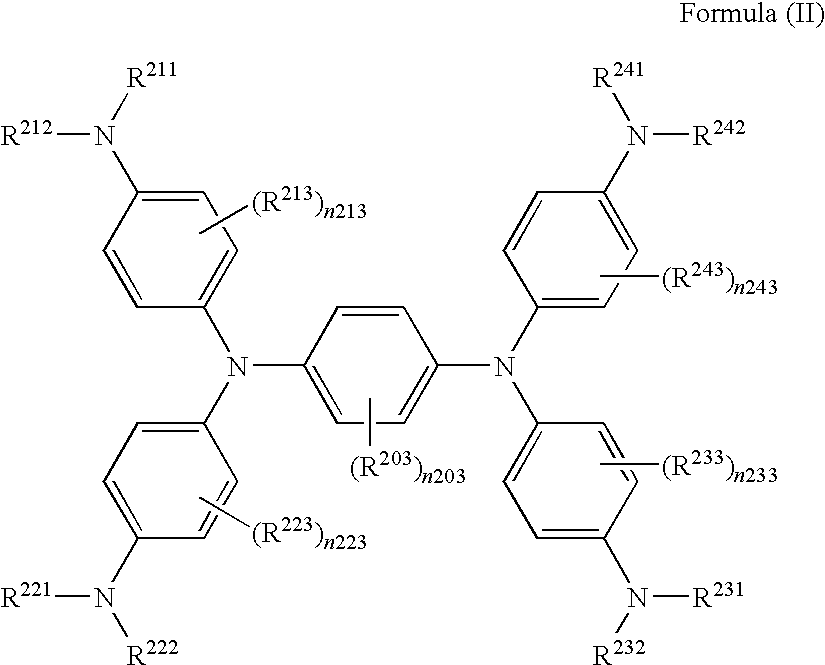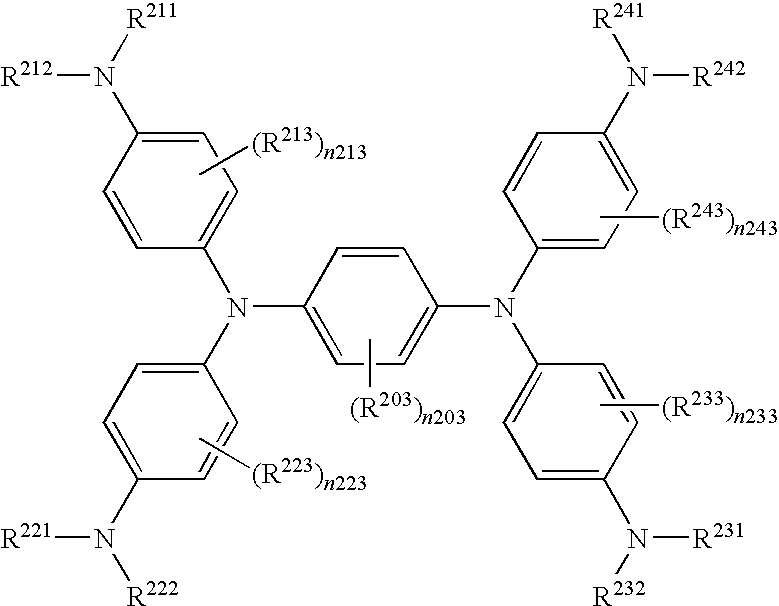Near-infrared absorbing material
a technology of near-infrared and absorbent materials, applied in the direction of triarylamine dyes, instruments, photosensitive materials, etc., can solve the problems of dye decomposition, difficult for dyes to have such resistance,
- Summary
- Abstract
- Description
- Claims
- Application Information
AI Technical Summary
Benefits of technology
Problems solved by technology
Method used
Image
Examples
example 1
Preparation of Near-Infrared Absorbing Filter
[0104]Ten grams of polystyrene, compounds (I) and (III) whose structures and amounts are shown in Tables 1 and 2, and 0.1 g of exemplary compound (XII-6) were added to 100 ml of chloroform, and the mixture was stirred at 40° C. for 15 minutes to prepare a solution. The solution was coated on a glass plate and the resulting coating was dried by air blow at room temperature to manufacture a sample.
[0105]The spectroscopic absorption spectrum of the compound (XII-6) was measured and the maximum spectroscopic absorption wavelength was obtained. The absorbance of the exemplary compound (XII-6) contained in the sample was measured at the maximum spectroscopic absorption wavelength. Thereafter, the sample was irradiated with light emitted from a xenon lamp at 95,000 luxes for 3 days. The absorbance of the exemplary compound (XII-6) contained in the irradiated sample was measured at the maximum spectroscopic absorption wavelength. The retention ra...
example 2
Preparation of Near-Infrared Absorbing Filter
[0109]Ten grams of polystyrene, compounds (I) and (III) whose structures and amounts are shown in Tables 3 to 7, and 0.1 g of compound (XII) whose structure is shown in Tables 3 to 7 were added to 100 nil of chloroform, and the mixture was stirred at 40° C. for 15 minutes to prepare a solution. The solution was coated on a glass plate and the resulting coating was dried by air blow at room temperature to manufacture a sample.
[0110]The spectroscopic absorption spectrum of compound (XII) was measured and the maximum spectroscopic absorption wavelength was obtained. The absorbance of the compound (XII) contained in the sample was measured at the maximum spectroscopic absorption wavelength. Thereafter, the sample was irradiated with light emitted from a xenon lamp at 95,000 luxes for 3 days. The absorbance of the compound (XII-6) contained in the irradiated sample was measured at the maximum spectroscopic absorption wavelength. The retention ...
PUM
| Property | Measurement | Unit |
|---|---|---|
| wavelength range | aaaaa | aaaaa |
| wavelength range | aaaaa | aaaaa |
| spectroscopic absorption wavelength | aaaaa | aaaaa |
Abstract
Description
Claims
Application Information
 Login to View More
Login to View More - R&D
- Intellectual Property
- Life Sciences
- Materials
- Tech Scout
- Unparalleled Data Quality
- Higher Quality Content
- 60% Fewer Hallucinations
Browse by: Latest US Patents, China's latest patents, Technical Efficacy Thesaurus, Application Domain, Technology Topic, Popular Technical Reports.
© 2025 PatSnap. All rights reserved.Legal|Privacy policy|Modern Slavery Act Transparency Statement|Sitemap|About US| Contact US: help@patsnap.com



